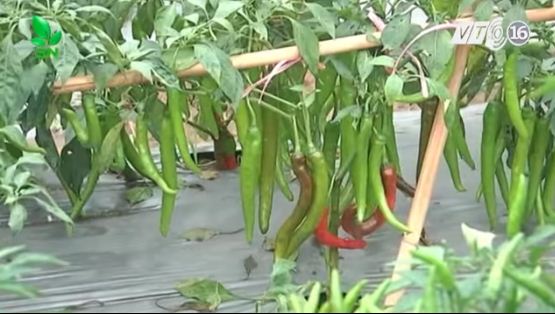Understanding how to control ‘jumping’ genes
Texas A&M scientists connect Serrate protein and gene transcription
Media contact: Blair Fannin, 979-845-2259, This email address is being protected from spambots. You need JavaScript enabled to view it.
COLLEGE STATION – A team of Texas A&M University and Texas AgriLife Research scientists have made a new discovery of how a single protein, Serrate, plays dual roles in controlling jumping genes.
The work will greatly help scientists manipulate gene expression for breeding better crops as well as design a more efficient therapeutic strategy for curing human disease, according to the scientists.
Drs. Xiuren Zhang and Zeyang Ma, along with a team of scientists in the department of biochemistry and biophysics and Institute for Plant Genomics and Biotechnology at Texas A&M in College Station, have their findings published online in the journal, Developmental Cell at https://www.cell.com/developmental-cell/abstract/S1534-5807(18)30416-7.

Drs. Xiuren Zhang and Zeyang Ma. (Texas A&M AgriLife Research photo by Blair Fannin)

ATXR5 co-localized with Serrate in the nucleus.
Jumping genes, or transposons were discovered by maize geneticist Barbara McClintock in the 1940s. These genes change position or “jump” along the genome and make up a large portion of the genome DNA — more than 40 percent of the human genome and up to 90 percent of genomes for certain plants.
“For years, they had been thought of as useless or ‘junk’ DNA,” Zhang said. “However, it has been recently known that transposons also play very important roles in gene regulation and evolution regardless of the potential deleterious effect.”
The team has been working for years on the functions of Serrate in the model plant Arabidopsis, a small weed that is a popular tool for understanding the molecular biology of many plant traits. Unexpectedly, they found that Serrate, best known in processing of microRNA and message RNA, is also involved in the regulation of jumping gene expression.
Their work involved isolating Serrate protein complexes. They found in the complexes there are Arabidopsis Trithorax-related proteins known as ATXR5/6. These are the enzymes that add the Histone 3 K27 monomethylation, or H3K27me1, mark to the chromatin, which serves as a home for DNA, including transposon genes.
“H3K27me1 acts to repress transposon expression,” Ma said. “That means the more the H3K27me1 mark, the less the expression of transposon genes. Because of this, transposon expression level is increased in the plants that lack ATXR5/6 genes.”
The scientists then used a plant that harbors a mutation of the Serrate gene and surveyed the genome-wide level of the H3K27me1 mark. They found that this mark on the chromatin was decreased in the Serrate mutant, which means that Serrate promotes ATXR5/6 to add the H3K27me1 mark and inhibits the production of the transposon transcripts.
“One would expect that the transposon transcripts would be highly accumulated in the plants that lack Serrate gene,” Ma said. “When team members measured the levels of transposon transcripts, to their big surprise they did not see the increment. Rather, transposon expression was shut down again when the plants concurrently miss ATXR5/6 and Serrate genes.”
To solve this paradox, the scientists proposed that Serrate must have an additional role besides promoting ATXR5/6 enzymatic activity in adding H3K27me1 marks.
After screening several potential candidates, they pinpointed RNA-Dependent RNA Polymerase 6, or RDR6. RDR6 is a protein that can reduce the transposon transcript amount once the transcripts are made. This regulation pathway is also called post-transcriptional gene silencing.
When the scientists introduced the mutation of RDR6 into the plants that lack the Serrate and ATXR5/6 genes, they found that transposon transcripts were again highly accumulated, as observed in the plants that only miss the ATXR5/6 genes.
“That means, Serrate protects transposon transcripts from being silenced by RDR6,” Ma said. “Altogether, we found that a single protein has totally opposite functions in different regulation steps to control the net amount of the target.”
“It totally makes sense if you take a close look at the function of transposons because they are important but also harmful to the host if their expression level is too high” Ma said. “Transposon genes must be tightly controlled by balanced forces to allow low but essential expression. I’m still very much impressed by the beautiful and elegant natural design that the plant uses a single protein to fine tune the gene expression level.”
Zhang said Serrate and its homolog arsenic resistant gene 2 (Ars2) have a vital role in the biology of plants and humans.
In plants, missing of Serrate leads to reduced statue, deformed leaf and altered responses to environmental stresses. In humans, knock out of Ars2 results in embryonic lethality, and altered Ars2 expression is linked to several kinds of disorders in the bone marrow and neural stem cells.
Establishing a connection between Serrate and transposon silencing not only represents a significant advancement in the field, but also provides new ideas to improve agricultural traits and to tackle human diseases in the long run.
The work was funded by a grant from the National Science Foundation.
Agrilife Today
Older news items:
- New type of photosynthesis discovered - 21/06/2018 03:54
- Consumers’ food choices can help reduce greenhouse emissions contributing to climate change - 21/06/2018 03:40
- Interconnected benefits of urban agriculture - 12/06/2018 04:01
- Organic insect deterrent for agriculture - 12/06/2018 03:10
- A community of soil bacteria saves plants from root rot - 13/11/2017 10:24


